Today, let me tell you another story.
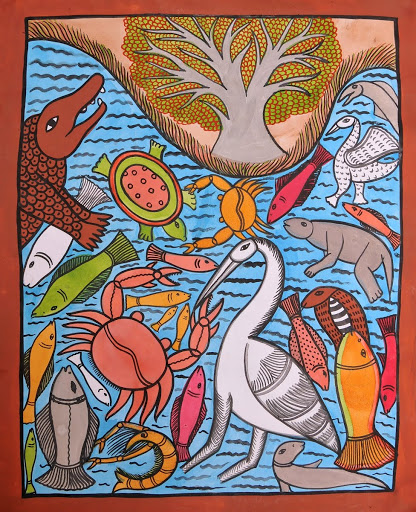
There was a beautiful hermitage on the bank of river Gangā, where a group of hermits lived in peace.
The hermits were disciples of a Guru Yadnyavalkya, who was always absorbed in meditation, and followed rigorous self-discipline.
One day, while he was bathing in the river, a hawk flew over with a mouse in its claws. Suddenly, the mouse fell from the hawk’s grip right into the hands of the Guru.
When the Guru noticed that the hawk was flying above, he knew he cannot leave the mouse alone, or he is to be caught again. He put the mouse on a leaf of a nearby Banyan tree, and took a second bath to purify himself.
He used his powers to transform the female mouse into a little girl, and took her to the hermitage.
He said to his wife, “My dear, please accept her as our blessing, as we do not have a child of our own.”
Thus, the girl started growing in the hermitage, under the care and supervision of the Guru himself. She learnt many sciences, and ways of life.
Both the Guru and his wife were very proud of their special child.
One day, the Guru’s wife brought into his notice that their girl had reached marriageable age. They decided to give it a serious thought, as she was a special child and deserved a special husband.
The next morning, using his powers, the Guru summoned the Sun God to him, and said, “Please accept my daughter’s hand. I wish you to marry her, if she chooses so.”
But the daughter said, “Father, the Sun God lights up the entire world, but he is unbearably hot and fiery-tempered. I do not wish to marry him. Please seek a better husband for me.”
The Guru wondered, “Who might be better than even the Sun God?”
The Sun God advised, “Guruji, you can seek the alliance of the King of Clouds. He is superior to me, for he can cover me and my light.”
So the Guru, using his powers, summoned the King of Clouds, and said, “Please accept my daughter’s hand. I wish you to marry her, if she chooses so.”
But the daughter said, “Father, the King of Clouds is dark, wet and too cold. I do not wish to marry him. Please seek a better husband for me.”
The Guru wondered, “Who might be better than even the King of Clouds?”
The King of Clouds advised, “Guruji, you can seek the alliance of the Lord of Winds. He is superior to me, for he can blow me away.”
So the Guru, using his powers, summoned the Lord of Winds, and said, “Please accept my daughter’s hand. I wish you to marry her, if she chooses so.”
But the daughter said, “Father, the Lord of Winds is too fast and restless. He keeps changing his direction. I do not wish to marry him. Please seek a better husband for me.”
The Guru wondered, “Who might be better than even the Lord of Winds?”
The Lord of Winds advised, “Guruji, you can seek the alliance of the Lord of Mountains. He is superior to me, for he can stop me from blowing.”
So the Guru, using his powers, summoned the Lord of Mountains, and said, “Please accept my daughter’s hand. I wish you to marry her, if she chooses so.”
But the daughter said, “Father, the Lord of Mountains is too hard and rigid. He is immovable. I do not wish to marry him. Please seek a better husband for me.”
The Guru wondered, “Who might be better than even the Lord of Mountains?”
The King of Mountains advised, “Guruji, you can seek the alliance of the King of Mice. He is superior to me, for he can make holes all over me.”
So the Guru, using his powers, summoned the King of Mice, and said, “Please accept my daughter’s hand. I wish you to marry her, if she chooses so.”
When the daughter met the King of Mice, she was delighted and shyly agreed to the marriage.
The Guru transformed his daughter into a beautiful female mouse, for her to perform all household duties of her clan.
Thus, the Guru’s daughter was married.
The wise indeed say:
What is in-born, can never change.
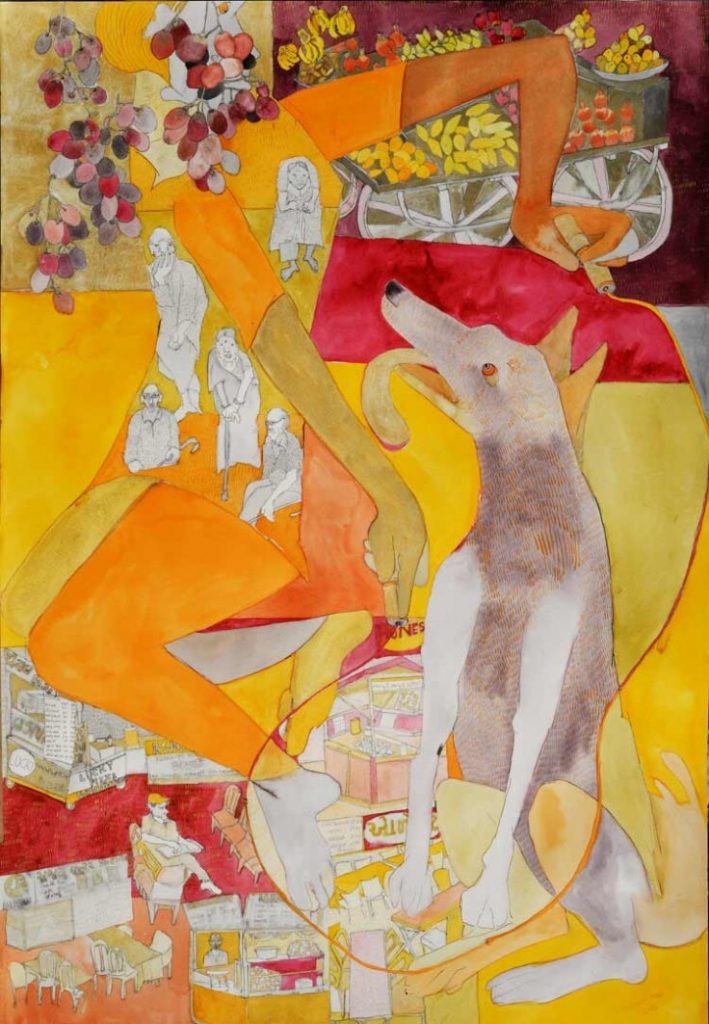
The Pañcatantra is an ancient Indian collection of interrelated animal fables in Sanskrit verse and prose, arranged within a frame story. Pancha means five, and tantra means techniques, or strategies.
The surviving work is dated to roughly 200 BCE, based on older oral tradition. There is a version of Panchatantra in nearly every major language of India, and in addition there are 200 versions of the text in more than 50 languages around the world.
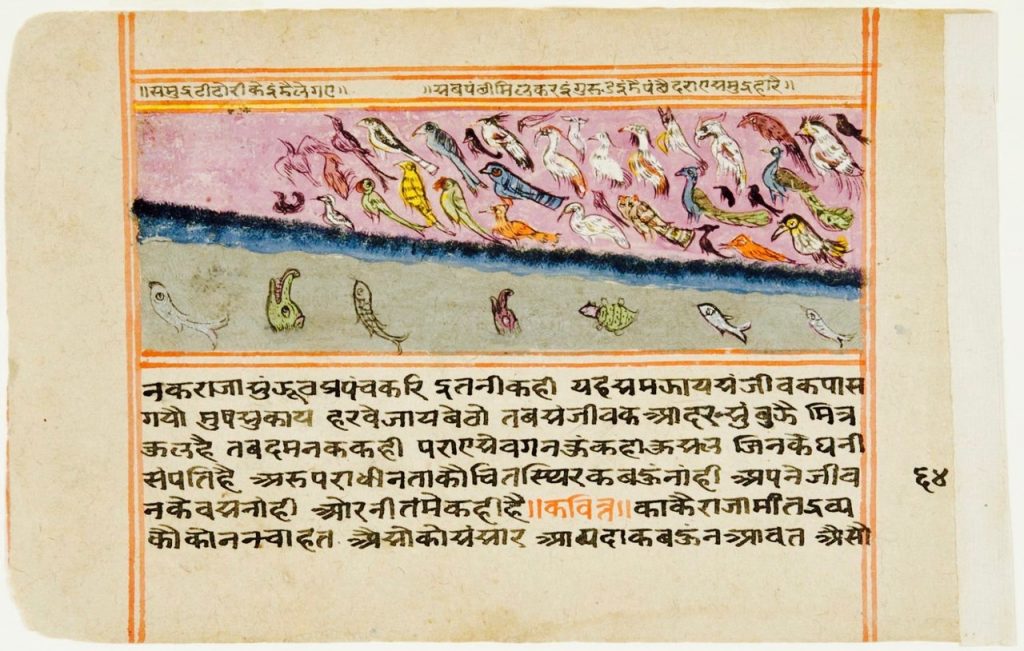
It is written in sūtra form, with a saying or strategy, and then a series of stories that follows the sutra to explain it. Each story has learnings of it’s own as well. The five strategies are:
Mitra-bheda: The Separation of Friends (The Lion and the Bull)
Mitra-lābha or Mitra-samprāpti: The Gaining of Friends (The Dove, Crow, Mouse, Tortoise and Deer)
Kākolūkīyam: Of Crows and Owls (War and Peace)
Labdhapraṇāśam: Loss Of Gains (The Monkey and the Crocodile)
Aparīkṣitakārakaṃ: Ill-Considered Action / Rash deeds (The Brahman and the Mongoose)
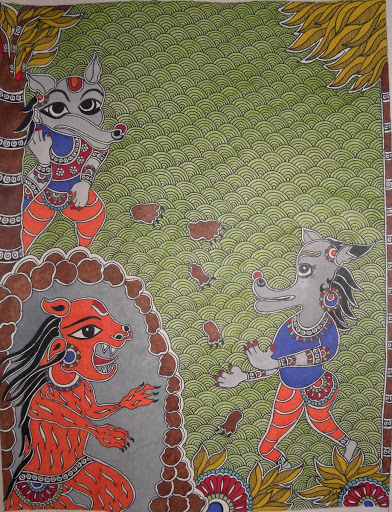
The beauty of the Pañcatantra is it’s style of narration. The stories are interwoven in a way that one leads to another. The characters include humans, mice, snakes, kites, owls, turtles, jackals, tigers and many other animals, who interact with each other and carry these stories forward.
The names of the characters are also interesting. In the first strategy, Mitrabheda, there is a story of three fishes. The names of the fishes are Anagatvidhata (one who’s destiny is undecided), Pratyuttpannamati (one who works using his intellect according to the situation) and third is Yadbhavishya (one who leaves everything on the destiny and does not work).
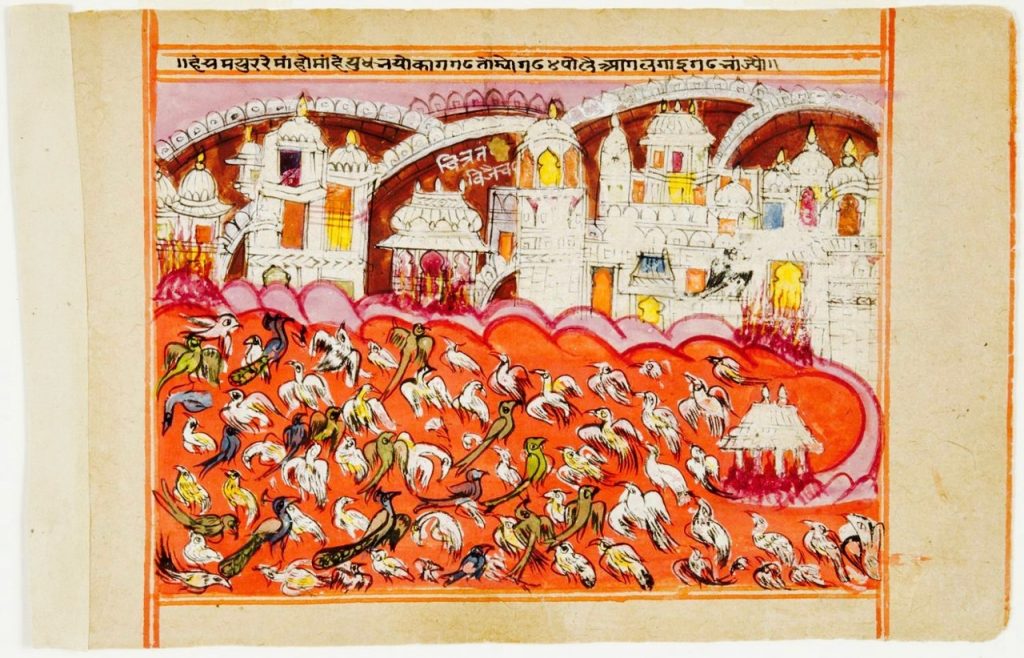
The Panchatantra is a nītiśāstra. Nīti can be roughly translated as “the wise conduct of life” and a śāstra is a technical or scientific treatise; thus it is considered a treatise on political science and human conduct. Its literary sources are “the expert tradition of political science and the folk and literary traditions of storytelling”. It draws from the Dharma and Artha śāstras, quoting them extensively. Entertaining children and adults alike, the Panchatantra is a gem of world literature, that is a personal favourite of mine. I will be bringing out a series on the Panchatantra, with relevant excerpts in Sanskrit. Hope you enjoy it:)
The story of the wedding of the mouse found it’s way into Japan (The Rats and Their Daughter) , Korea (A Bridegroom for Miss Mole), French North Africa (The Most Powerful Husband in the World), France (The Vole Who Sought a Wife), Persian, Chinese, Arabic, English, and many other languages as folk tales.
अयम् निजः परॊवॆति गणना लघु-चॆतसाम्।
उदार-चरितानाम्तु वसुधैव कुटुंबकम्॥पञ्च_५.३७॥
ayaṃ nijaḥ paro veti gaṇanā laghucetasām ।
udāracaritānāṃ tu vasudhaiva kuṭumbakam ॥
Panchatantra Book 5 – The lion that sprang to life
He who has a narrow mind, thinks this is mine, this is his.
To a large-hearted person, the whole world is his family.
